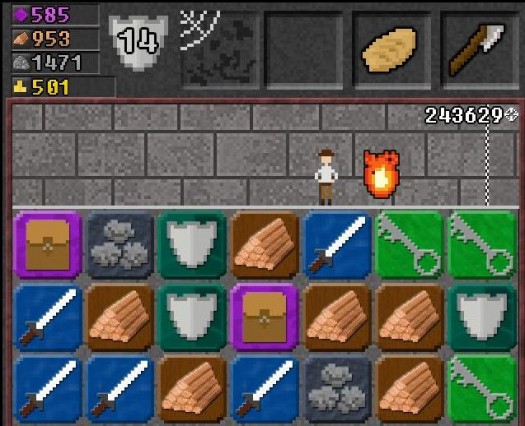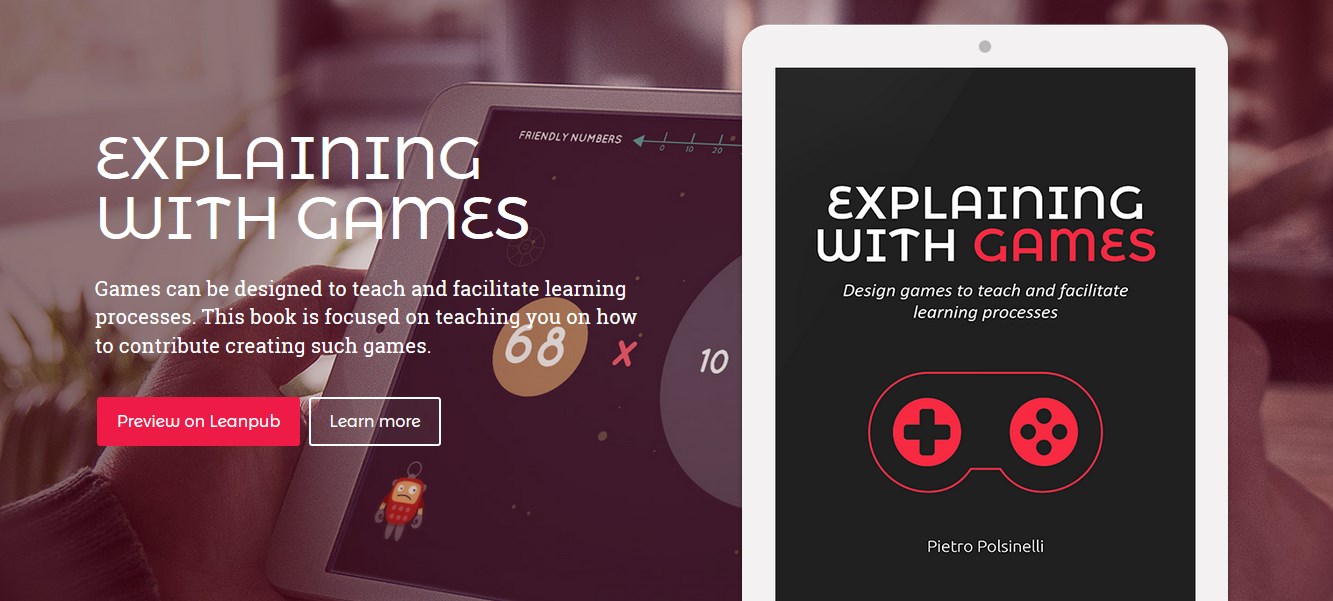 This is an interview with Sebastian Deterding of CodingConduct.cc. We ask Sebastian about how he became involved in usability and game design studies, and from there we go to persuasive design, Koster’s fun as learning theory, game grammars and more. [Read more…]
This is an interview with Sebastian Deterding of CodingConduct.cc. We ask Sebastian about how he became involved in usability and game design studies, and from there we go to persuasive design, Koster’s fun as learning theory, game grammars and more. [Read more…]
Talking with Sebastian Deterding of “Persuasive Design” – DAG pod 1
Prototype a game in 48 hours: 7 easy tricks
A video from 2009 by Kyle Gabler which is still inspirational:
This may come particularly handy if you ever participate in a Global Game Jam.
Design a Game Podcast – first season ready
The Design a Game Podcast will now start publishing a series of podcast interviews mostly to non USA / Canadian game designer and producers. [Read more…]
Engagement by Design talk – and game mockups
This is the talk I’ve given about “Engagement by Design” at Better Software 2012:
Relating to game design and mockupping, I hope this talk shows the conceptual density necessary in game design. This reinforces the argument for mockupping, because of the complexity of the matter at hand; a nice quote I heard from @AntonioVolpon is
“build the least viable prototype”
(and a mockup before that) – an improvement with respect to “build the minimal viable product”.
All the links quoted in the talk are collected in this booklet.
Narratives and game mockups
 I’ve recently taken part in a preparatory meeting for a game design course, and my teacher / colleague Giovanni Mattioli was wondering about the relationship between narratives and game mechanics. Giovanni is an experienced and sharp comics / graphic novel scripter, so I’ve put these links together for him and anyone who may be unaware of the Pandora’ vase that this topic is in game design. I end the post with a few considerations about mockupping games with extended narratives.
I’ve recently taken part in a preparatory meeting for a game design course, and my teacher / colleague Giovanni Mattioli was wondering about the relationship between narratives and game mechanics. Giovanni is an experienced and sharp comics / graphic novel scripter, so I’ve put these links together for him and anyone who may be unaware of the Pandora’ vase that this topic is in game design. I end the post with a few considerations about mockupping games with extended narratives.
There seem to be two cases that should be distinguished:
1. narratives that constitute the core of the game play – e.g. in classical adventure games
2. narratives as one of the dimensions of game play experience – where narrative is a form of feedback.
Thinking about story scripting, the simplest and most direct relationship is the one between storyboard and classical adventure games; but narrative adventures today are a small fraction of the field, and one among many kinds of relationships between stories and games.
Studies on the theme
Some references:
Games can and do exist without narrative:
http://www.raphkoster.com/2012/01/20/narrative-is-not-a-game-mechanic/
The Narrative vs Mechanics Circus:
http://www.whatgamesare.com/2012/02/the-narrative-vs-mechanics-circus.html
The Chemistry Of Game Design:
http://www.gamasutra.com/view/feature/1524/the_chemistry_of_game_design.php?print=1

 Here I tried to write about what is the role of storytelling in video games:
Here I tried to write about what is the role of storytelling in video games:
Storytelling and video games
http://gamamoto.com/2011/11/08/storytelling-and-video-games/
Narrative and games: examples of a complex relationship
An overview updated up to 2008 of games where the narrative dimension is most relevant is here: https://honors.rit.edu/amitraywiki/index.php/Narrative_and_Video_Games
 To get a feel of the complexity of the possible relationship, significant and innovative examples that come to my mind are Braid, Heavy Rain, Sword & Sworcery, FTL. FTL is an interesting case, as that narrative could play such a central role in a roguelike with permadeath seems unlikely, but there you go (hear this podcast for more on this topic).
To get a feel of the complexity of the possible relationship, significant and innovative examples that come to my mind are Braid, Heavy Rain, Sword & Sworcery, FTL. FTL is an interesting case, as that narrative could play such a central role in a roguelike with permadeath seems unlikely, but there you go (hear this podcast for more on this topic).
 Another clear example of the combination of a narrative with a mechanic that seems as far as possible from a narrative perspective is in 10000000 where actually they work just fine togehter.
Another clear example of the combination of a narrative with a mechanic that seems as far as possible from a narrative perspective is in 10000000 where actually they work just fine togehter.
In another direction, games induce narratives; a particular example is “Things I Ate in Skyrim”. Yet another and very recent update on the theme is this, on writing Dishonored: In Dishonored, Sometimes The Story Is What You Don’t See.
The relationship between narrative and the game design process
Coming now to the theme of this blog, game mockupping, and prototyping, when we consider the narrative aspect in my experience here we have a problem.
First thing I would consider where does our game idea come from? A story, a game mechanic, a character, a visualization? A game idea can start anywhere, all those are good starts, but the problem may come in the combination. If the game is based on a core game mechanics like shaking your phone, adapting a storyboard to the mechanic may be problematic if not damaging. Mockups can readily express the structure of the game main and eventually minor loops, but are structurally not apt for representing linear storytelling in a compact, useful way.
The linear progression of a narrative is hard to concile with level design, as it is better realized as a continuously connected relationship, and the segmentation givel by level design creates discontinuities that need specific story design – e.g. see Limbo.
In cases where you have a game where narrative plays roles beyond that of a form of feedback, the only way to solidify the resulting game play seems to put together a working prototype; atmosphere requires concept art, music too is important… we see how centering on narratives quickly leads to expensive games even at prototyping stage. And never lose sight that games are always about fun, and not about literary expression… . Good luck.









